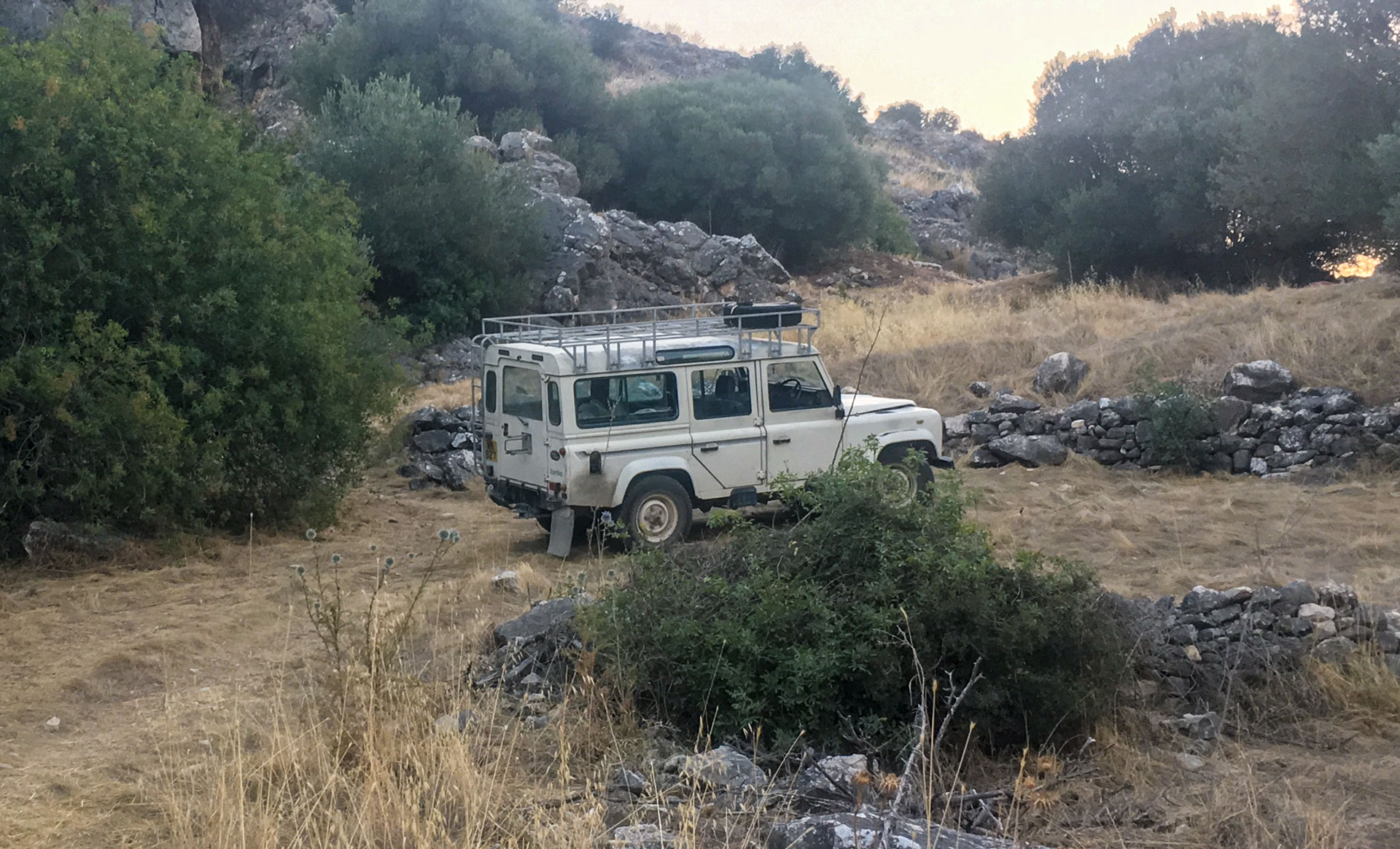- Future Students
- How to Apply
- Visit UHCL
- Admitted Students
- Tuition, Costs and Aid
- Degrees and Programs
- Contact Admissions
- Current Students
- Class Schedule
- Academic Calendar
- Advising
- Events
- Library
- Academic Resources and Support
- Student Services and Resources
- Alumni
- Lifetime Membership
- Alumni Events
- Update Your information
- Awards and Recognitions
- Give to UHCL
Day in the life of archaeologists excavating an ancient site in Cyprus
July 16, 2018 | Sarah Costello

(Editor’s note: This is the third in a series of blog posts submitted by University of Houston-Clear Lake’s Associate Profess of Art History Sarah Costello, who is in Cyprus finalizing her ongoing work excavating and seriating Neolithic pottery at a unique site in the Dhiarizos Valley.)
The excavation work day begins early. The team leaves for site at 5 a.m., first loading up equipment and drinking water into the trusty Land Rover. We drive deep into the beautiful valley in which our archaeological site, Prastio-Mesorotsos, is situated.
Our trenches are scattered on the slopes of a high rock that overlooks a river, today a trickle thanks to the dam upriver, but far more powerful as it raced past the settlement in antiquity. The trenches are fairly large, and stepped up the slope to reveal thousands of years of architecture, mostly stone walls, plaster floors, and storage or refuse pits. The settlement dates back to the Neolithic period, but grew in scale in the Bronze Age. People continued to use the site up to medieval times, and even today, there is a small village nearby.
Beginning at the first light of dawn, when the weather is still pleasant and breezy, the archaeologists and students work to reveal the layers of settlement. This involves digging, usually with small picks, trowels and brushes; and photographing and drawing each successive archaeological feature. Some days, you might spend hours removing bucket after bucket of dirt, digging through topsoil, while other days you spend hours scraping carefully to reveal a delicate earthen floor.
As the morning passes, it gets hotter and hotter. We break for breakfast at 9:30, eating boiled eggs, bread and cheese in the shade, then continue digging until 12:30 when the midday heat makes it hard to keep working. The afternoon is spent washing pottery, recording finds, and updating our notebooks.
The work is exhausting, but it’s so exciting to see the past emerge from out of the ground that it’s all worthwhile.
For more information about UHCL’s art history minor, visit www.uhcl.edu/academics/degrees/art-history-minor.
Previously:
- Remarkable reliquary in cathedral in Cologne
- UHCL art history prof blogs on Rhine en route to Cypriot archaeological dig
- Studying, washing, recording objects found at dig site in cyprus






